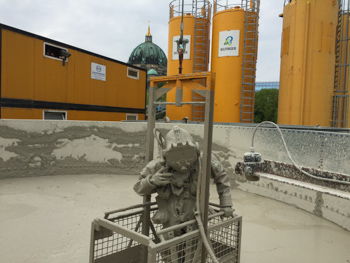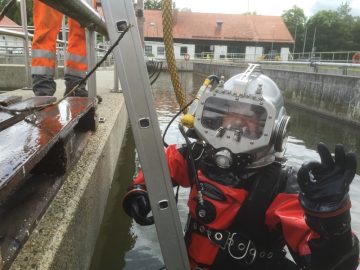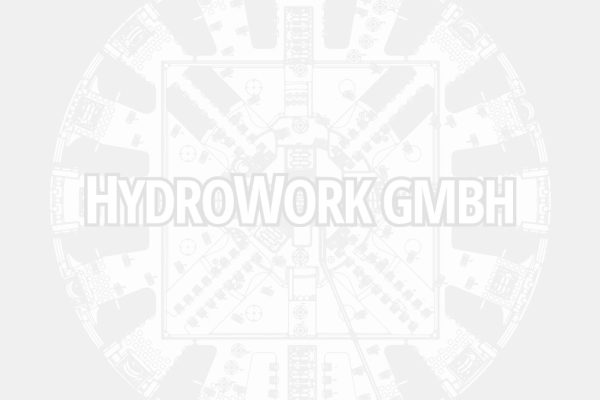The diving helmet, equipped with automatic FreeFlow system AFS 3 was produced with the surface supply SLS according to the new DIN EN 15333-2 standard as usable, tube-provided, light diving equipment. The diving helmet conforms thus the state of art.
Application limits:
- Ambient temperatures: minus 20°C to plus 50°C
- Water temperatures: plus 4°C to plus 35°C
- Diving depth: tested up to 50 meters
- Breathing gas: approved for breathing air according to DIN EN 12021
- Noise level < 105 dB (A)
- Operation: physically suitable, trained and instructed personnel
Protective functions:
– Free Flow System, constant hyperbaric pressure inside the helmet, breathing air outlet via sluice valves, no backflow of the external environment, suitable for contaminated waters,
– breathing air inlet via an automatic, internal metering valve, high air delivery capacity, low breathing work even with liquids with a density above 1 kg/dm³, warmer breathing air, free non-misting front screen
– personalized head hood thanks to shock-absorbing material, approval as construction site helmet DIN EN 397 protection level A
– hearing protection capsules reduce the noise level by 25 dB (A), loudspeakers of the communication system with low power also reduce the noise level, microphone in the hearing protection capsules enables communication even at a high internal and external noise level
Profile Free Flow diving helmet Tatum AFS 3
Type tested according to DIN EN 15333-2
The certification body is DNV GL SE, identification number 0098
The helmet has:
- Approval as head protection according to DIN EN 397 type A (construction site helmet)
- Approval for use in liquids with a density greater than water
- Approval for contaminated waters
Download Characteristics
Modular construction:
GRP helmet shell with stainless steel helmet ring, multi-valve block with integrated check valve between main and emergency air connection, sealing gas valves (sluice valves) for the exhaled air, front frame to hold the pane and Special accessories, balance weights
Automatic Free Flow System:
The breathing air is dosed automatically, Pressure controlled dosing valve, the minimum free flow is 10 %, the remaining quantity to the Breath is dosed on demand by a lung automatic control. manual control allows to increase the free flow from 10% to 100%. The Permanently inflowing Free Flow reduces the CO2 level inside the helmet significantly below the permissible limit value, an inner mask is therefore not required. The control diaphragm and thus also the control of the automatic dosing valve has no direct contact with the surroundings. The automatic dosage therefore also works in liquids with a density greater than water e.g. sludge. The automatic dosing valve divides the one part flows in front of the window, the other part floods the window with air lower part of the helmet. This prevents fogging of the visor and an enrichment of CO2 excluded. The helmet internal pressure is adjusted to plus 18 to 20 mbar and it is used as a control variable for the inlet of the breathing air.
Sealing gas valves (sluice valves) as outlet valves:
The exhaled air escapes via Sealing gas controlled exhaust valves. The inner valves are not in direct contact with of the environment, open and close first and are always pressurized inside and outside to the external environment. Penetration of water or other solutions into the helmet will thus prevented.
Hood with removable, integrated Diver Head Set:
The hood is attached to the Head size adjusted by the diver and equalizes the space between head and helmet off. The helmet needs no additional head attachment. The diver headset, loudspeaker and microphone, is housed in ear protection capsule. Due to the shape of the helmet shell, the construction of the head hood in connection with the hearing protection capsules a reduction of the noise level of 25 dB(A) is reached. The noise level in the hearing protection capsule Microphone enables interference-reduced communication with the land station. The Noise at the ear is reduced, which reduces the sound power of the speakers to < 10%. could be reduced than usual.
Balance weights:
The balance weights ensure an even weight distribution on land and in water. The helmet is always balanced.
Made in Germany:
The production of the components and modules, as well as the final assembly takes place in Germany.





